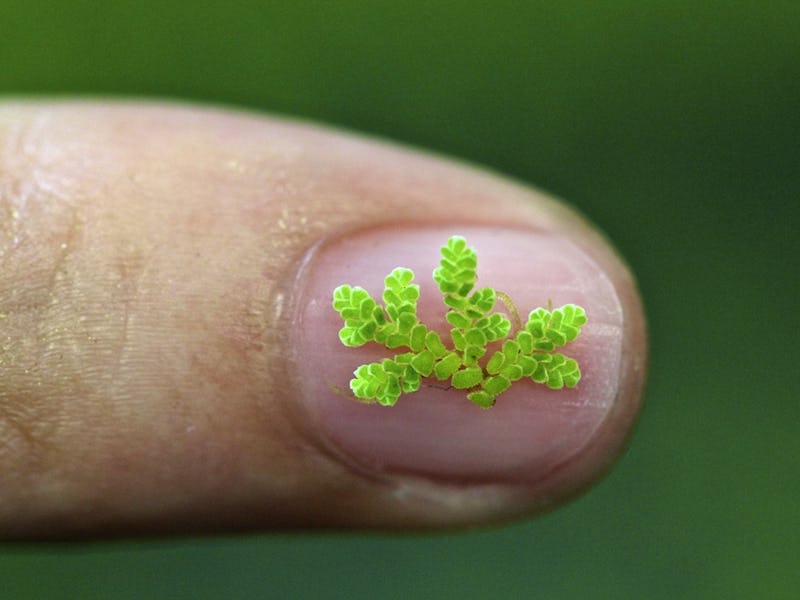This Tiny Fern Is the "Most Economically Important' Fern On Earth
Meet the plant nicknamed 'green manure.'

Much like Frodo in The Lord of the Rings, the fern Azolla filiculoides proves that the small can certainly pack a punch. This minuscule water fern, which has leaves the size of a single gnat, is the focus of a new study published in Nature Plants. Scientists say the bright green plant is complete with unique capabilities — and has the potential to help us mitigate the effects of climate change.
In the study released last week, an international team of scientists announced they successfully sequenced the A. filiculoids genome as well as the genome of another floating fern known as Salvina cucullata. Co-author and University of California Berkeley integrative biology professor Carl Rothfels, Ph.D. tells Inverse that having these genomes brings scientists one step closer to “understanding some of the crazy biology of these particular species.”
Rothfels says that one of the most “extraordinary features” of this fern is its ability to have a symbiotic relationship with cyanobacteria, which in turn gives it the ability to “fix” nitrogen. Nitrogen fixation is the process by which plants use the chemical element as a fertilizer: Most plants typically can’t do this alone, but the blue-green cyanobacteria that live in the Azolla leaves allow for this process to happen. In turn, Azolla can sustain rapid growth in favorable conditions.
Azolla is a floating aquatic fern with a very fast growth.
That’s important for multiple reasons, the first being that the fern shows “great promise as a biofuel,” says Rothfel. While it’s been used as a fertilizer for rice paddies in Asia for the past 1,000 years, he and his team are now curious to know whether it could be used as a sustainable fertilizer elsewhere. Its ability to help agricultural crops is compounded by its resistance to pests: Farmers have noticed for decades that bugs generally don’t like ferns, and now the sequencing of the Azolla genome reveals it carries certain genetic mutations that allow it to repel insects.
All of this has earned Azolla the nickname “green manure,” and co-author and Cornell University assistant professor Fay-Wei Li, Ph.D. says it is “perhaps the most economically important fern that has ever lived!”
But Li and Rothfel both note that the fern’s incredible ability to grow and thrive could help humans save themselves from climate change. In fact, it’s actually helped out the planet before.
Carbon dioxide has increased since the Industrial Revolution.
“There was a massive Azolla bloom in the Arctic 50 million years ago so large that geologists believe it drove down a significant amount of C02 (carbon dioxide) and helped cool the Earth,” says Li.
That means that Azolla, one of the fastest-growing plants on the planet, has the potential to be a significant carbon sink today. A massive rise in modern-day atmospheric carbon dioxide levels are directly linked to the warming of the planet and overall climate change.
Millions of years ago, this fern “sequestered so much carbon that it switched the globe out of ‘hothouse’ conditions into the relatively cooler conditions that we experience now,” says Rothfel. If we grow a huge amount of this tiny plant, we might be able to make that happen again.